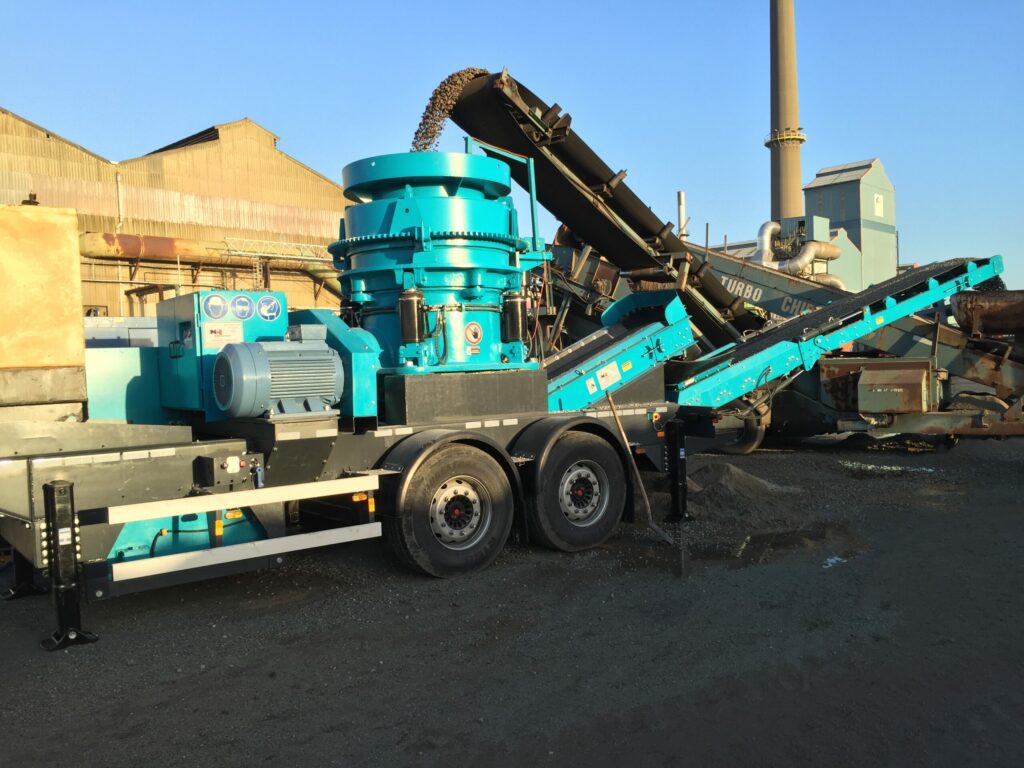Processing of concrete debris from road construction is usually done using a percussion crusher. The give-up material has a size of 0/800 mm. Larger pieces are reduced using an excavator equipped with a crusher.
These machines come standard with an independent double-deck front screen with side belt, specifically designed to separate the 0/15 mm fraction, also known as screening sand. The impact bars, mounted on the rotor, rotate at a speed of about 600 rpm. They throw the give-up material against the impact bars, reducing the material by the impact. A post-screen on the crusher's output conveyor sifts the crushed concrete debris to size, with the excess returned via a return conveyor. Production of a 0/40 mm finished product typically results in a capacity of between 150 and 200 tons/hour.
cone crusher https://naessenshydraulics.be/mobiele-brekers-2/kegelbrekers/
Producing granules with a cone crusher
To produce concrete aggregates for reuse in mixing plants and generate maximum value, it is essential to sift them accurately into three fractions: 0/6 mm, 6/14 mm and 14/22 mm. The latter two fractions represent the most value, namely three times the value of the sand.
For reducing or crushing concrete rubble, the percussion crusher, as described here, is definitely the most effective choice. Pure and unreinforced concrete rubble, from road construction or demolition, is often valuable. The crushing process of the percussion crusher, or impact crusher, is known for producing a high percentage of crushing sand. This results directly from the kinetic energy absorbed by velocity, followed by the explosion of the debris onto the adjustable impact bars.
To create maximum value for reuse in the mixing plants, the task is clear. Extract as much granulate 6/22mm as possible instead of sand.
To achieve this, the combination of the jaw crusher and the cone crusher is the ideal solution.
The forced crushing principle of these machines produces at least 25% more granules for the same job as with the impact principle of the percussion crusher.
With the jaw crusher, the concrete debris is pre-crushed to 0/120mm and fed through to the cone crusher. With the CSS set to 17mm, 0/35mm is produced in one pass. The capacity in this setup is between 160 and 180 tons/hour. The result after screening out the three fractions.
65% of 8/22mm fraction, 20% of 0/8mm fraction and in these settings an overgrain 22/35mm percentage 15%.


